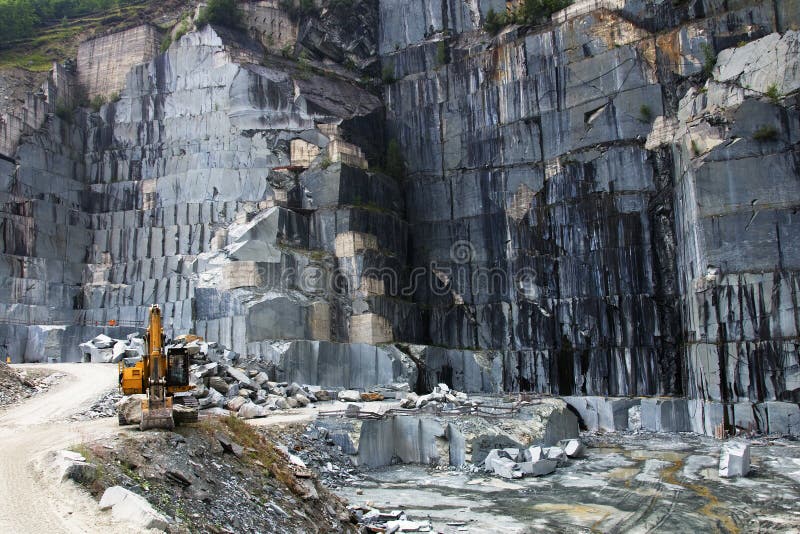Discovering Granite Quarries in South Africa: A Comprehensive Guide
Discovering Granite Quarries in South Africa: A Comprehensive Guide
Blog Article
Revealing the Mysteries of Granite Quarrying: Where Strength and Elegance Meet
The globe of granite quarrying is a realm where the raw toughness of nature converges with human virtuosity to create structures that stand the test of time with an air of beauty. From the midsts of quarries to the precise sprucing up in workshops, the procedure of transforming granite right into architectural marvels is an intricate dance of custom and technology. As we peer right into the depths of this old craft, we start to discover the covert details that shape the very essence of our developed setting.
The Origins of Granite Quarrying
In the annals of architectural background, the origins of granite quarrying are shrouded in a tapestry of old workmanship and geological marvels. Going back to old Egypt and Mesopotamia, the extraction of granite from quarries noted the start of a journey that would eventually bring about the creation of some of the world's most renowned structures.
Granite quarrying's origins can be mapped to the experienced craftsmens who identified the stone's toughness and aesthetic charm. With a combination of primitive tools and sheer resolution, these very early quarry employees unearthed granite blocks that would certainly come to be the building blocks of human beings.
As human beings developed, so did the techniques of quarrying granite. The Romans, renowned for their engineering prowess, established advanced approaches for removing granite to build monoliths, holy places, and roads that stood the test of time.
The legacy of these old quarrying methods remains to shape contemporary architecture, with granite remaining a symbol of toughness and elegance in construction projects around the globe. (granite quarries in south africa)
Tools of the Quarrying Profession
The development of granite quarrying techniques from old people to modern times highlights the important function played by the tools of the quarrying sell shaping the sector's practices. In old times, quarrying devices were rudimentary, commonly consisting of knives, hammers, and wedges made from materials like bronze or iron. These tools called for considerable manpower and time to essence granite obstructs from quarries.

Additionally, the intro of pneumatically-driven devices and high-powered machinery has significantly reduced the physical labor called for in quarrying operations, boosting employee security and productivity. As the quarrying industry continues to introduce, the devices of the trade continue to be at the leading edge of driving development and forming the future of granite extraction.
Drawing Out Blocks of Granite
Making use of precision equipment and progressed techniques, the extraction of granite blocks from quarries has actually come to be an advanced procedure in the modern quarrying sector. Controlled blowing up methods are then used to damage apart the granite right into workable sections.

Polishing and Completing Strategies
To accomplish a remarkable surface area on granite blocks, experienced craftsmens use a collection of careful sprucing up and finishing techniques. After the first removal and forming procedures, the granite obstructs undergo an extensive polishing stage to improve their all-natural elegance and toughness. One typical approach used in polishing granite is diamond abrasion, where commercial rubies are made use of to grind and polish the stone to a smooth finish. This process not just creates a glossy surface yet additionally makes sure uniformity in color and structure across the granite block.
Along with polishing, completing strategies are applied to web further improve the granite's look. These strategies may consist of flaming, developing, or brushing, each offering distinct textures and surfaces to suit various aesthetic choices. Flaming, for instance, includes exposing the granite surface to high temperatures to produce a harsh, distinctive surface, suitable for exterior applications where slip-resistance is important. Refining, on the other hand, provides a matte surface that is smooth to the touch, perfect for indoor counter tops and floor covering. By thoroughly choosing and using these polishing and completing techniques, artisans can transform raw granite blocks right into beautiful pieces that display both strength and beauty.

Ecological Effect and Sustainability
With the expanding focus on ecological awareness in the sector, granite quarrying practices are increasingly scrutinized for their effect on natural deposits and long-lasting sustainability. Quarrying for granite can have significant ecological ramifications. The removal procedure frequently includes making use of heavy machinery, dynamites, and big amounts of water, leading to environment destruction, dirt disintegration, and water air pollution. Furthermore, the transportation of granite from quarries to refining centers creates carbon discharges, even more adding to ecological destruction. granite quarries in south africa.
To mitigate these impacts and guarantee sustainability in granite quarrying, industry stakeholders are taking on various measures. Carrying out sophisticated technologies to minimize energy consumption and water usage, recovering quarried land for environmental restoration, and advertising responsible sourcing methods are some techniques being used. Accreditations such as more info here the Forest Stewardship Council (FSC) and the Leadership in Energy and Environmental Layout (LEED) assistance customers determine eco friendly granite items.
Verdict
To conclude, granite quarrying is a process that calls for specialized tools and strategies to remove blocks of granite and polish them to a high level of coating. While the ecological influence of quarrying can be significant, efforts are being made to improve sustainability techniques in the market. Generally, granite quarrying is a delicate balance between taking advantage of the toughness and elegance of this all-natural rock while lessening its effect on the setting.
Report this page